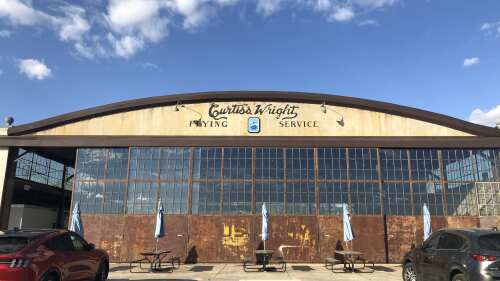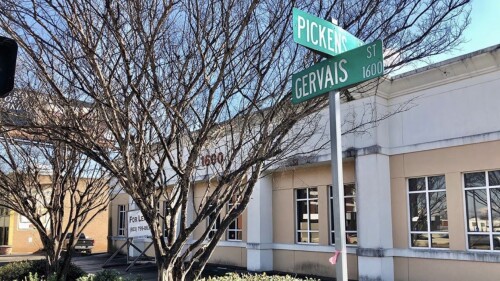In 1908, in the midst of the mail-order catalog era, Sears, Roebuck and Company issued the first Book of Modern Homes and Building Plans in an effort to increase its sales of building materials. The first catalog listed 44 different styles of homes that ranged in sizes, options and costs that readers could purchase. By 1916, these catalog homes came with every material that was needed to build the house, all the way down to pre-cut lumber, windows + paint, and a set of instructions. (Think: IKEA furniture on steroids.)
Once a family chose the style home they wanted, all they had to do was mail a check to Sears and Roebuck – which even had financing options available – and a few weeks later, all of the parts would arrive by train.
While Sears Modern Homes were very affordable, they weren’t cheaply constructed. According to Popular Mechanic, the homes came with high-end materials (often including oak floors + cypress ceilings). Because the company ordered the building materials it would ship out in such high volume, it was able to keep prices low for consumers. In 1918, popular models ranged in price from $3,600-4,600 (that’d be approx. $61,000-78,500 today), according to Forbes. Additionally, the financing application didn’t ask demographic questions (ethnicity, gender, etc.), which gave home ownership options to those who faced discrimination locally.
While Sears advertised that the mail-order homes could be built in only 90 days with just basic skills, most families hired builders to get the job done.
The last catalogs were sent in 1940 + in these 32 years, some 75,000 Sears and Roebuck kit homes were purchased and built – predominantly through the Midwest and Northeast US.
Though the Sears catalog homes weren’t as common throughout the South, they can still be found sparsely scattered throughout southern cities. According to Historic Columbia, there’s at least one Sears Modern Home that we’re aware of in downtown Columbia, at 1716 Wayne St. in the Arsenal Hill neighborhood. The house was built for $5,000 in 1914 – equivalent to approx. $128,900 today – by Francis Butler, an Atlantic Coastline Railway postal clerk, and his family.
Identifying a Sears Modern Home can be difficult, especially since the company lost the majority of its records on the homes. However, there are a few tricks to identify one – including stamped lumber, shipping labels + unique column arrangements.
Do you live in a Sears catalog home (or think that you do)? Or do you know of any local Sears homes? Send us an email with your pictures and stories + we’ll work on an update with what we receive.Wishing you could travel back in time and purchase one of these homes? (Me too.) Until that’s possible, check out this Sears Modern Homes catalog from 1936.
Wishing you could travel back in time and purchase one of these homes? (Me too.) Until that’s possible, check out this Sears Modern Homes catalog from 1936.













